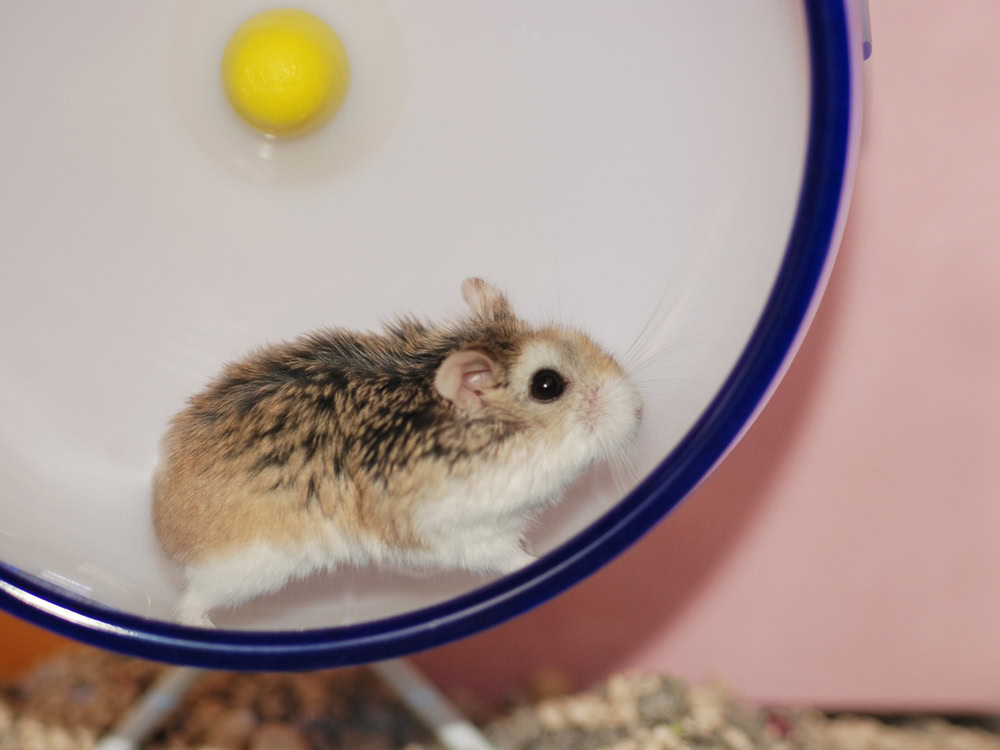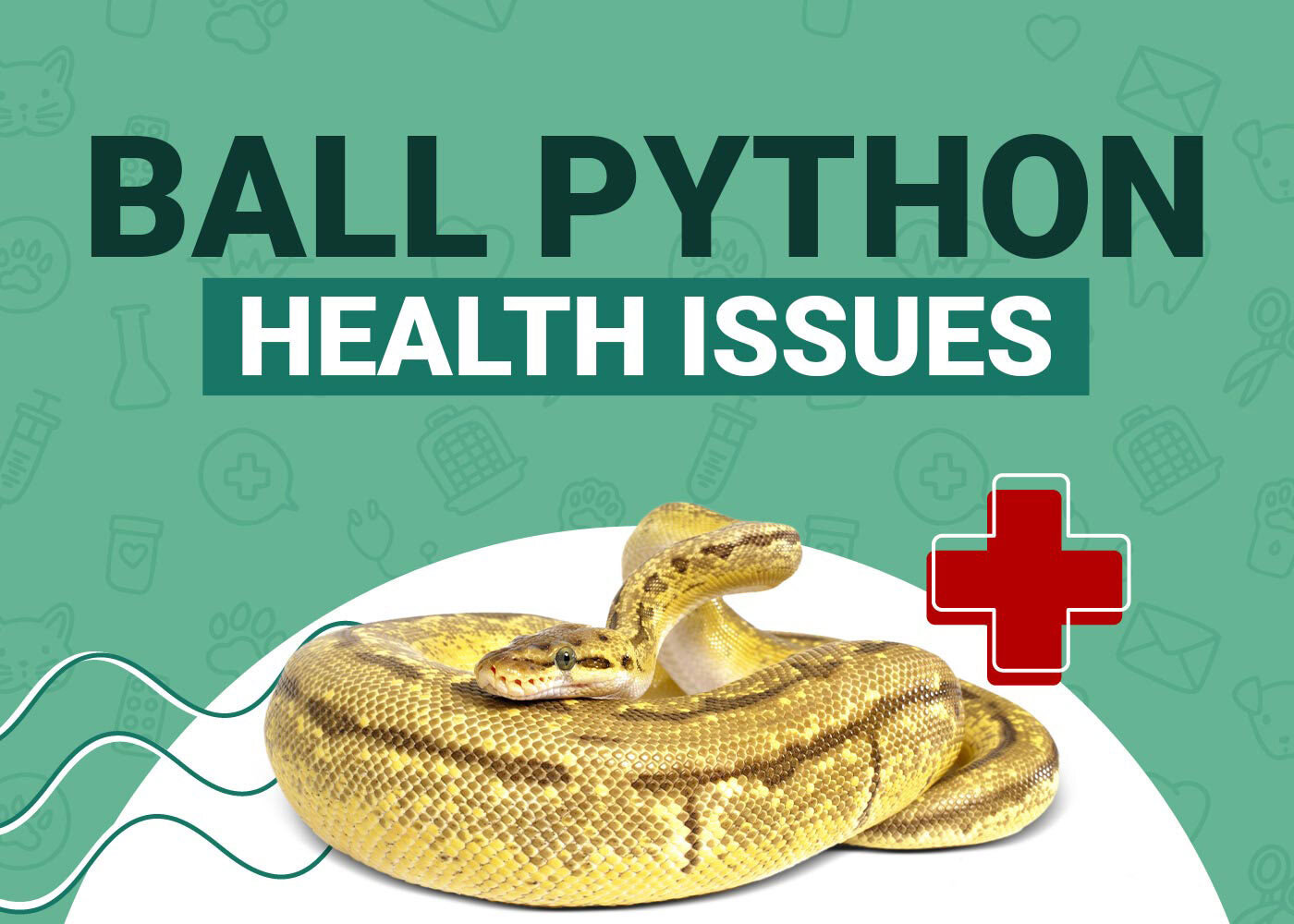VET APPROVED

The information is current and up-to-date in accordance with the latest veterinarian research.
Learn more »Click to Skip Ahead
Most people know that hamsters are active pets that like to run around their cage and in hamster wheels, but how fast can a hamster run? Like other rodents, hamsters can run incredibly fast.
With their small size and short legs, Syrian hamsters can sprint up to 3 km (around 1.9 miles) per hour. Anecdotally, dwarf hamsters may sprint faster; however, their maximum speed hasn’t been well documented in research studies. Let’s look at the numbers more closely.

How Fast Do Hamsters Run?
In studies involving hamsters, the maximum speed of Syrian Hamsters during a short sprint was calculated at around 3 km per hour.1 This roughly translates as 1.9 miles per hour. The same study found that the average distance traveled by a healthy hamster per day was between 10–12 km (6.2–7.5 miles), while the maximum distance covered by a healthy hamster in one running period was around 6 km (3.7 miles). This level of stamina is truly impressive for such a small animal.
Another study involving Syrian Hamsters specifically trained for endurance running found that these hamsters could be trained to run at speeds of up to 1.56 km/hour (around 1 mile/hour) 2. The hamsters in this study were able to maintain this speed for up to an hour.
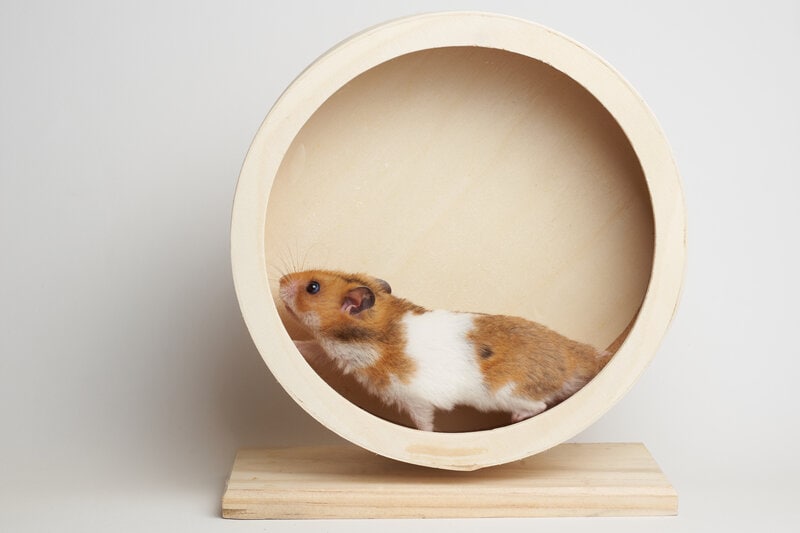
Which Hamster Species Is the Fastest?
The Syrian hamster is the best studied hamster for speed tests. Dwarf hamsters are often more active and are considered more difficult to hand-tame due to their tendency to almost always be running around.
This observation has led to the belief that certain dwarf hamster species, such as the Roborovski (Phodopus roborovskii), are possibly the fastest hamster species. However, there are no verified studies which have calculated their sprinting speed or their speed during an endurance run.
What Impacts a Hamster’s Speed?
A hamster’s speed is most affected by their overall cardiovascular health. A hamster which has had heart conditions or isn’t well conditioned for running has both a worse maximum sprint and lower endurance than a hamster with no such health drawbacks.
In addition, overweight or obese hamsters also have worse speeds than their conspecifics who are at a healthy weight. Repeated wheel use has been associated with better overall health, more fat-free mass (including skeletal muscle), and better hamster welfare.
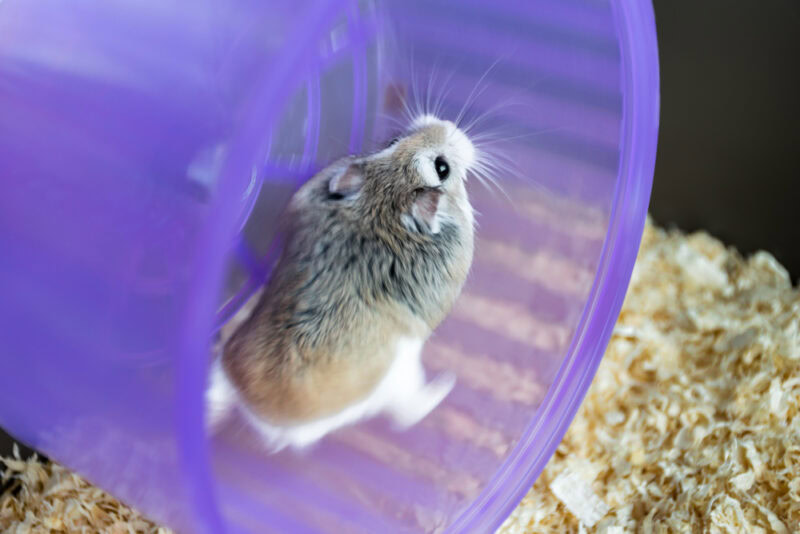
How to Give Your Hamster Enough Exercise
Given how a hamster in the wild can travel several miles foraging for food, it’s definitely impossible to replicate these conditions for a pet, as the logistics of such a large enclosure are definitely not possible in a practical sense. As such, the generally agreed upon rule is that the larger your hamster’s enclosure, the better.
Hamsters are very self-motivated to voluntarily use a hamster wheel, especially when they are introduced to it at a young age. When it comes to wheel preference, hamsters are more accepting of larger wheels that are completely circular compared to small, truncated wheels. Syrian hamsters should ideally use wheels intended for rats. Though some people like to add obstacles on a hamster’s wheel, these have shown to not enhance their preference for a wheel.
Contrary to popular belief, hamsters do not fare well with an exercise ball out of their cage. These devices don’t allow a hamster to control when it stops, and once a hamster moves, the ball will only stop when it inevitably crashes into an object. Being in a ball can also quickly disorient a hamster, and lead to injuries as they crash into objects as well. As such, their use for hamsters is strongly discouraged.
Hamsters are often quite drawn to interactive toys which they can manipulate in order to receive a reward (such as a worm or another treat). These can be used instead of exercise balls to encourage more activity for your pet.
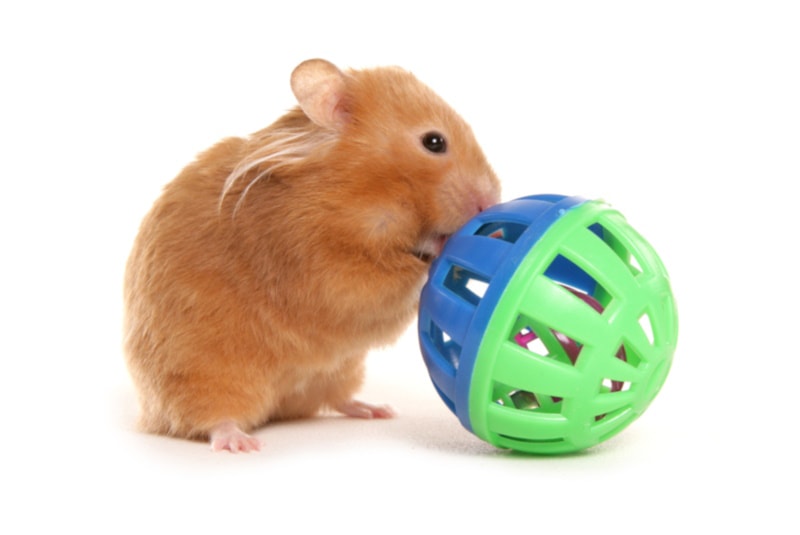

Conclusion
Hamsters are relatively fast for their size, and also possess an impressive amount of stamina when it comes to running. Given their active nature, it’s vital to provide your hamster with plenty of exercise when they’re kept as pets. Fortunately, hamsters are naturally fond of large, sturdy wheels and need very little encouragement to run in them.
See also:
- https://www.petmd.com/exotic/evr_ex_hm_five-most-popular-hamster-breeds
- https://happyhabitats.net/blogs/blog/the-speed-of-a-hamster
- https://www.sciencedirect.com/science/article/abs/pii/S003193840400232X?via%3Dihub
- https://pubmed.ncbi.nlm.nih.gov/16386768/
- https://journals.sagepub.com/doi/10.1258/002367705774286493?url_ver=Z39.88-2003&rfr_id=ori:rid:crossref.org&rfr_dat=cr_pub%20%200pubmed
Featured Image Credit: Seattle Roll, Shutterstock
